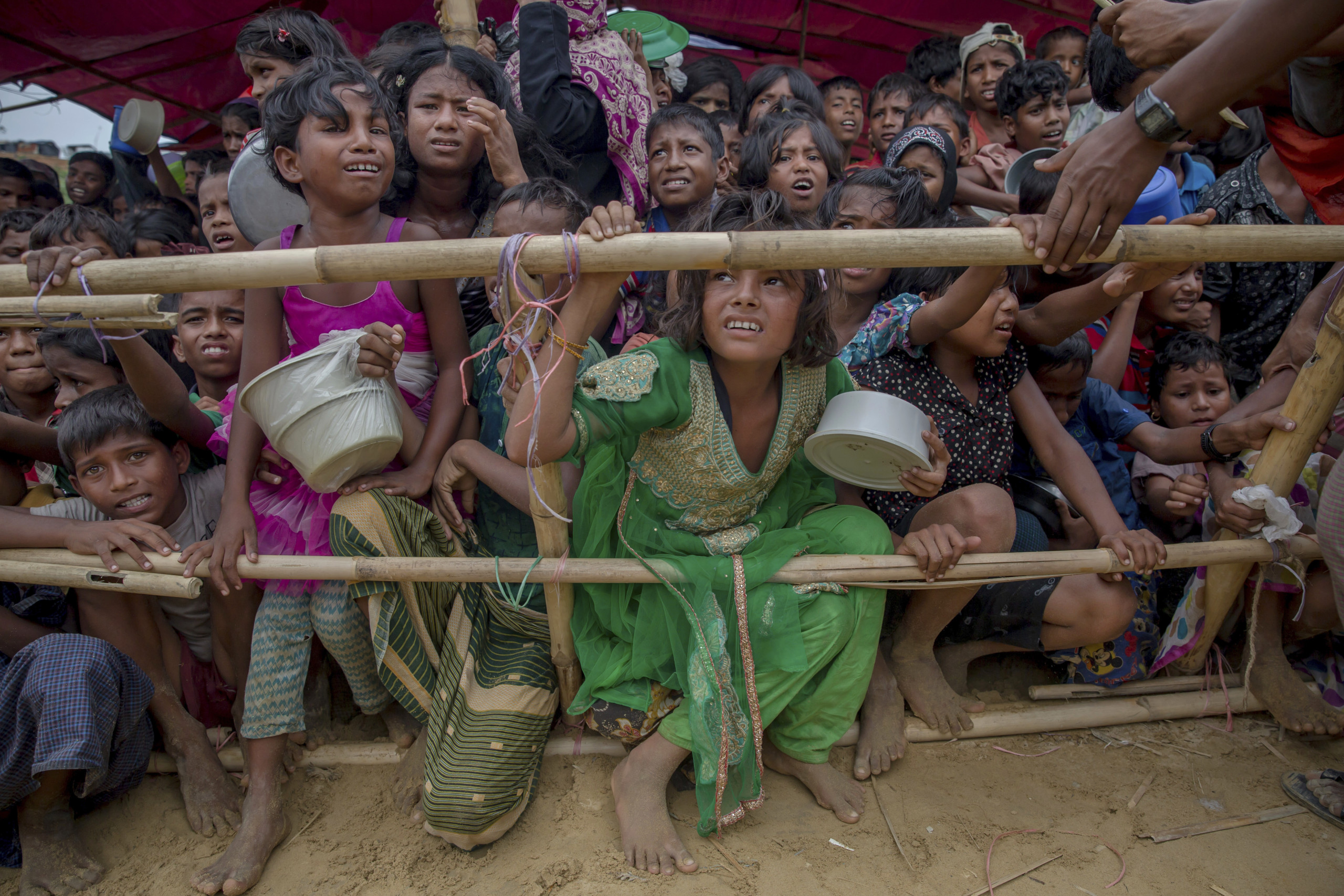Context
Myanmar’s descent into civil conflict, triggered by the post-election military coup on February 1, 2021, has plunged the nation into a deep humanitarian crisis. The coup led to the detention of prominent political figures including the head of state, Aung San Suu Kyi, and sparked nationwide protests that were met with violent suppression by the military. This tumultuous turn of events escalated into a full-scale civil conflict in this embattled Asian state with a population of nearly 55 million, resulting in widespread displacement, loss of life, and an ever-deepening humanitarian catastrophe.
The 2021 coup brought to an end a decade of reforms launched by democratically elected governments and the country returned to face the atrocities it had witnessed under its previous military government from 1962 to 2011 when massacres, discrimination, sexual violence, forced labor and displacement turned Myanmar into a poverty-stricken isolated nation.
Key humanitarian tragedies
Three years into the conflict, Myanmar remains torn apart by armed infighting that is inflicting a devastating effect on the lives of people.
- The death toll is estimated to stand at 50,000 people, including 8,000 people at least.
- The humanitarian crisis in Myanmar has led to the significant displacement of civilians, with over 2.8 million internally displaced people within the country.
- Since February 1, 2021, an estimated 126,210 refugees have moved to other countries in the Asia-Pacific region, with significant numbers relocating to India, Thailand, Malaysia, and Indonesia.
- Compounding this grim picture is the crisis of the Rohingya refugees from Myanmar whose number exceeded 1 million as of September 2023.
Human rights violations
Since the conflict broke out, human rights watchdogs have reported “brutal nationwide crackdowns” on millions of people who oppose the rule. Human rights violations perpetrated by the military include summary executions, arbitrary detention, and torture.
Since the coup, the military has arbitrarily detained more than 16,000 opponents. Many former detainees have alleged torture or other ill-treatment such as sexual violence, during their detention. More than 20,000 opponents, including 3,909 women.
Sexual violence against women and girls has been reported to be among the methods of interrogation since the conflict began and as a weapon of war in the worst-hit areas.
Ethnic minorities are particularly affected, with the military exacerbating inter-ethnic tensions through the use of ultra-nationalist militia and forced recruitment from ethnic communities who are then used to attack others.
Healthcare system under attack
Healthcare facilities and personnel in Myanmar have been the target of numerous attacks, worsening the already dire healthcare situation in the country. Myanmar has reported 1,230 incidents of conflict violence affecting healthcare between February 1, 2021 and March 12, 2024.
These incidents resulted in damage to 318 health facilities, the loss of 114 healthcare workers’ lives, the kidnapping of 27 healthcare workers, and injuries to 139 healthcare workers.
Education sector badly hit
Myanmar’s education sector has been severely disrupted by the 2021 military coup which has led to the destruction of the educational infrastructure. Media and international organizations have reported deliberate airstrikes on school facilities.
This, coupled with poor financial circumstances, has hindered children’s access to education with school enrollment rates dropping from 69.2% in 2017 to 56.8% in 2023.
Enrollment in state-run universities has also dropped by over 70% since the coup, with student numbers falling from about 1 million to some 160,000.
Food insecurity worsening
The conflict in Myanmar has led to a significant reduction in food production and a surge in food insecurity as agricultural activities have been hampered which has resulted in a decrease in crop cultivation.
This, combined with the depreciation of the currency Kyat, has pushed the price of food beyond the reach of many families. As a result, the number of people experiencing food insecurity stood at 12.9 million in 2023, up from 2.8 million people prior to February 1, 2021.

Humanitarian needs
As of January 2024, almost 30% of Myanmar’s population, or 18.6 million people, were in dire need of humanitarian aid, an astonishing figure particularly when compared to the 1 million people who needed aid in 2021.
Nonetheless, the delivery of aid has been continuously hindered by bureaucratic obstacles imposed by the military authorities as well as by the hostile environment. Over the past three years, 40 aid workers have been killed, 35 injured, 15 kidnapped, and 212 arrested.
Despite facing challenges in access and communication, humanitarian assistance is being provided to the affected populations, with local and international partners having reached at least 2.5 million people by the end of September 2023.
Humanitarian response
The UN’s Humanitarian Response Plan for Myanmar remains significantly underfunded, with only around US$254 million of the required US$887 million secured in 2023. Urgent additional support is needed to address the escalating needs of those impacted by the conflict.
Over the past few years, funding for coordinated plans has fluctuated, with 2021 seeing US$240,841,381 in funding, 2022 with US$377,035,530, and 2023 with US$338,732,436.
Looking ahead to 2024, the estimated total requirement is US$993,548,103, with only US$73,996,731 having been currently funded, leaving a substantial gap of US$919,551,372. Major donors to Myanmar include the United States, Australia, Japan, the European Commission, the United Kingdom, and Germany.

